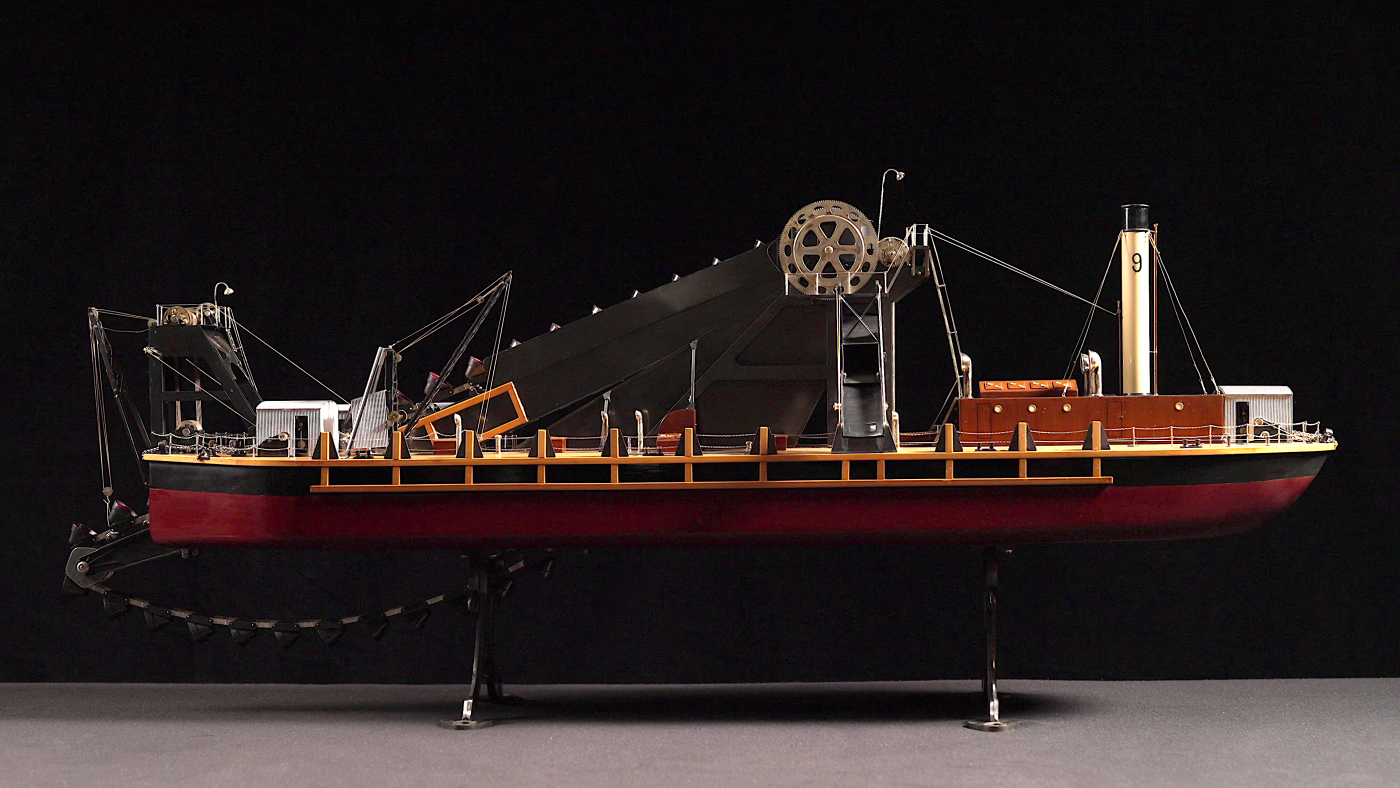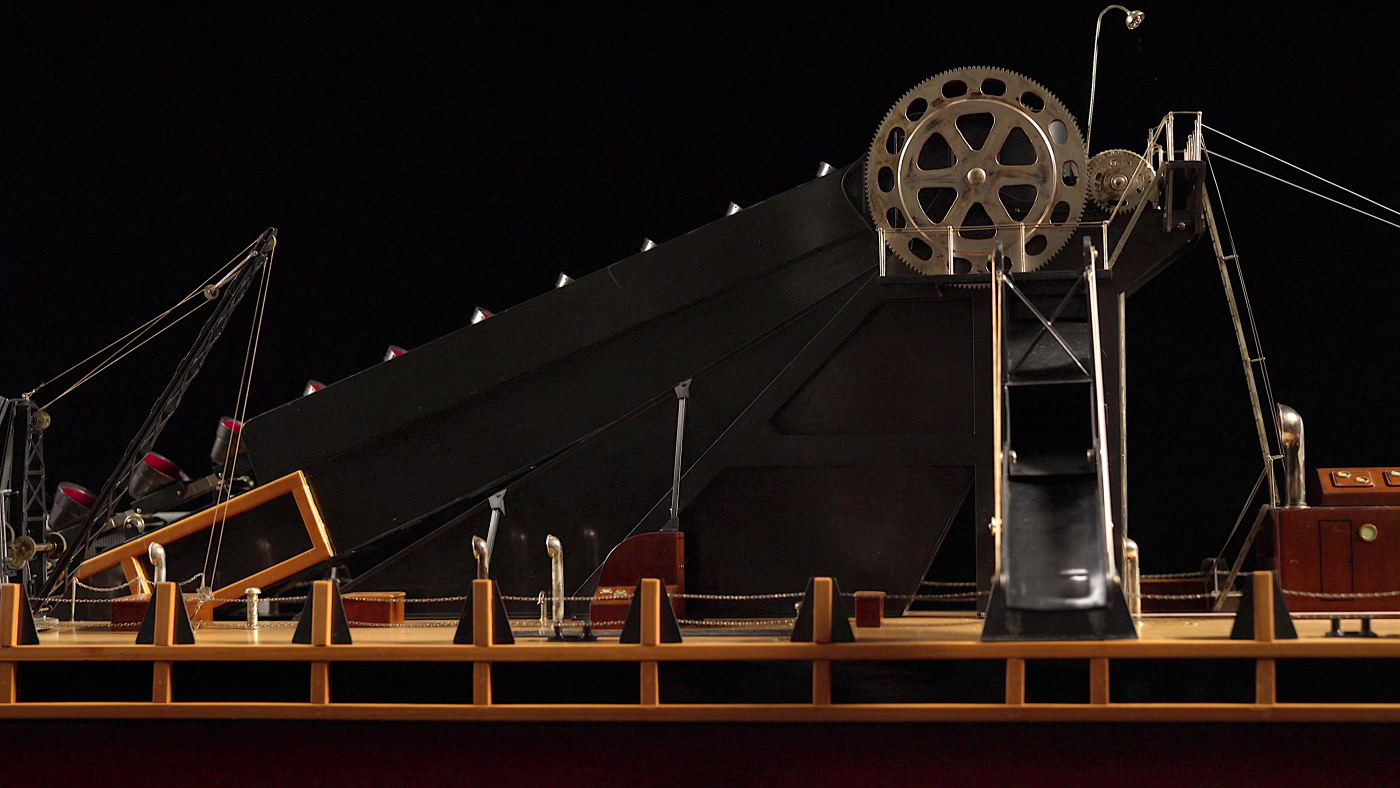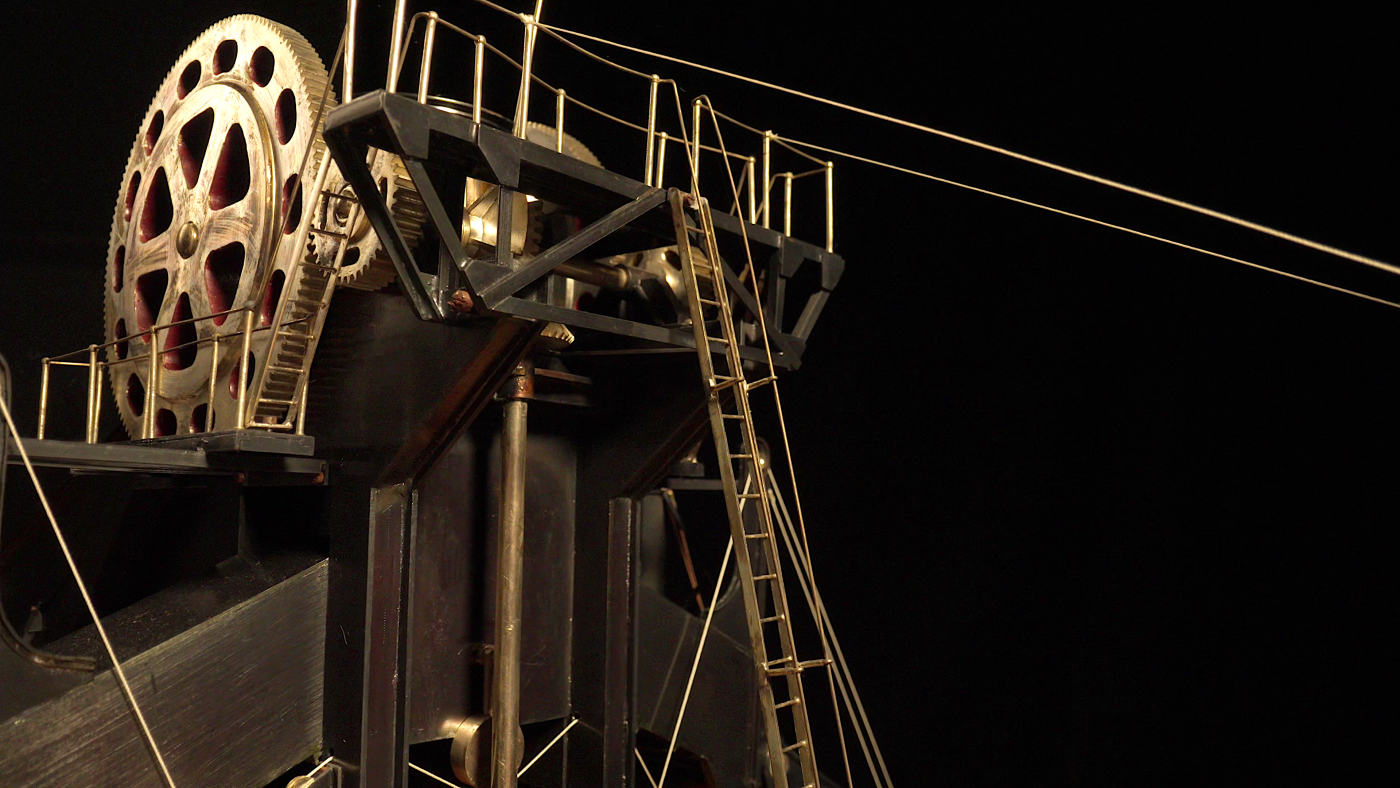Maritime Innovation In Miniature
Bucket Dredger no.9
This is a model of Bucket Dredger No.9, built in Paisley on the Clyde in 1923 and operated on the river Tyne. Dredgers have a history that goes back to Ancient Egypt, but this is an example of the pinnacle of steam dredger design.
Dredgers like this have played a key role in world history. They have improved the safety of coastal navigation and made deep water ports and shipbuilding facilities of unprecedented depth and scale. Without them the astonishing growth in ship size after the industrial revolution would have been impossible. In doing their job, however, they have wreaked unprecedented and irreversible damage on the marine environment, in some places changing our maritime world forever.
It is designed with a wide and flat-bottomed hull for stability. To maintain her position the dredger is equipped with numerous moorings, secured at various points around the vessel.

A steam engine drives both the propeller and the dredging machinery. A vertical shaft rises from the engine where the rotary motion is transferred via the main gearing. A continuous chain of buckets is attached to a ladder. The depth at which the buckets work is controlled via the ladder hoist gear. As the buckets reach the seabed they bite into the sediment and are filled. The buckets then rise up the ladder where they discharge into shutes on both sides of the vessel. ‘Hopper barges’ would lie alongside to receive the sediment before sailing to deeper water to empty their cargo.
Bucket dredgers have a finite limit in their physical size and the balance between size and output reached perfection in the 1920s. No larger bucket dredgers have ever been built. When operating at full capacity a vessel like this removed 800 tonnes of material from the seabed every hour. This was one of six that in the 1920s that worked day and night to make the Tyne deeper. Those who witnessed these monsters at work commented on the ceaseless shuddering, rattling and clanging, that polluted the Tyne.
An entire island in the centre of the Tyne was removed. 800 acres of sandbanks vanished. The river was deepened from 1.83 to 9.14 metres. 150 million tonnes were dredged from the river. Such a dramatic change to a river’s geography has dire consequences on the eco system. Perhaps nowhere has this been felt so powerfully as in the Tyne.

On the one hand, the Tyne becoming the largest repair port in the world by 1880, and the largest for the exportation of coal. Trade on the Tyne doubled. More ships were built on the Tyne than any other river apart from the Clyde.
But the river’s crucial shallow environments were lost, replaced by dark, cold and deep-flowing waters. The buckets dug so far down that biocides were released. Local riverside plant life disappeared and with it plankton and algae. Soon the river’s entire ecosystem collapsed. Crabs, worms and fry disappeared as well as insects like mayfly. This meant a decline in predators - salmon, trout and seals, and birds like the heron and kingfisher. The new depth of the river gave immense ships access deep inland, encouraging the establishment of industry which then poured its waste directly into the river.

A hundred years after work began to establish the Tyne as a shipbuilding centre with a global reputation, the river was declared ‘biologically dead’. The model therefore is the most powerful reminder that improvements in maritime technology did not come without consequences of the most serious kind. It is symbolic of an attitude of technological progress and profit at any cost - a history that must never be forgotten.

